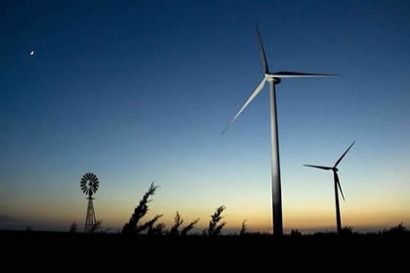
The European Wind Energy Association (EWEA) has released a statement saying that UN climate negotiations in Bangkok last week “produced little more than the agenda for further negotiations” and that a greater effort is needed to move beyong just the legal ins and outs.
“Discussions continue to focus around the legal form of a new treaty” explained Rémi Gruet, EWEA Regulatory Affairs Officer, “ignoring the key issue of how the international community will achieve the carbon dioxide emissions reductions needed to prevent catastrophic climate change.”
“An international agreement remains absolutely vital”, said Gruet, “but it’s clear that while there’s an impasse in the negotiations, many countries around the globe are getting on with avoiding carbon dioxide emissions by installing wind energy and other renewable energy sources.”
Meanwhile, EWEA calculations show that at the end of 2010, wind energy across the world avoided 255 Mt of carbon dioxide, equivalent to 26% of the emissions reductions commitment of industrialised countries under the Kyoto Protocol.
By 2020, wind power should avoid between 46% and 69% of the pledges made in the Cancun agreement, depending on whether pledges are met to the full or the minimum, said the Association.
Last week, EWEA announced that an incredible 65% of Germany’s electricity needs can be met by onshore wind power alone, according to a new study published by the Fraunhofer Institute for Wind Energy and Energy System Technology (IWES) and the German Wind Energy Association (BWE).
The IWES/BWE study finds that if wind power was developed on all suitable land in Germany – around 2% of the surface area – it could generate 390 TWh (terawatt-hour) of electricity per year. Germany’s current electricity demand stands at 600 TWh per year. This shows that wind power’s potential easily outstrips nuclear power’s current electricity generation, which is around 140 TWh per year.
For additional information:

